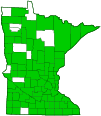black swallowtail
(Papilio polyxenes)
Conservation • Description • Habitat • Ecology • Distribution • Taxonomy
|
|
||||||||||||||
Description |
Black swallowtail is a mimic of the unpalatable pipevine swallowtail (Battus philenor). It is the state butterfly of Oklahoma. Adults have a wingspan of 3¼″ to 4¼″. Females are larger than males. The upper side of the forewing is black with two rows of yellow spots, one on the submarginal band, one on the median band. Both rows of spots extend to the forward (costal) margin of the wing. There is also a narrow, interrupted, yellow border on the outer margin, and a single yellow spot in the area just below the tip (subapical area). On the male, the medial spots are large and closely spaced. On the female they are narrow and widely spaced. The upper side of the hindwing is black with a marginal row of yellow spots, a postmedial row of iridescent blue spots, a median row of yellow spots, and a narrow, interrupted, yellow border on the outer margin. There is also a single eye-spot on the trailing margin near the tail. The eyespot is orange with a black pupil and a yellow border. On the male, the blue postmedial spots are small, and the yellow medial spots are large and closely spaced. On the female the blue postmedial spots are large, and the yellow medial spots are narrow and widely spaced. The hindwings have “tails”. The underside of the forewing is black with yellow markings mirroring those on the upper side. The underside of the hindwing is black with markings mirroring those on the upper side except that many of the yellow spots are partially or completely replaced with orange spots. The eyes are black. The mature (fifth instar) caterpillar is variable in color and up to 2″ long. It appears smooth but is actually densely covered with minute hairs. The background color is usually green but may be white, yellow, brown and white, or black. The color is determined by the wavelength of light reaching the larva when it is in the first instar stage. This color polymorphism allows the caterpillar to match the background color of the host site. The thorax is swollen and the head is held beneath the thorax. The thorax of the green form caterpillar is green with 2 black stripes in an inverted “v” pattern and 3 black spots. Each abdominal segment is green with a broad, horizontal black band. In each black band there are 6 yellow spots. There is also a narrow black band in the fold between abdominal segments. The legs are greenish-white with 2 black spots. Mature caterpillars are found from June onward. The pupa may be green or brown. The color varies between individuals of a local population, achieving a balance that ensures maximum survival. There is a Y-shaped gland (osmeterium) in the middle of the upper (dorsal) portion of the first abdominal segment of the caterpillar. Normally, the osmeterium is held internally and is not visible. It secretes a chemical that produces a foul odor and repels predators. The secreted chemical may also be toxic to predators. When disturbed, the caterpillar will extend (evert) the gland, turning it inside-out, and attempt to smear the predator with the chemical. |
Size |
Wingspan: 3¼″ to 4¼″ |
Similar Species |
Eastern tiger swallowtail (Papilio glaucus) has a black form female that looks similar. However, it has only one row of yellow spots on the upper side of the forewing and there is no yellow subapical spot. |
Habitat |
|
Ecology |
Season |
Two broods: mid-May to mid-June and mid-July to early September |
Behavior |
|
Life Cycle |
Mating usually takes place on a hilltop. The female lays small yellow eggs singly on a leaf or flower of a host plant. She will lay 30 to 50 eggs per day, eventually laying 200 to 440 eggs. The larva hatches 4 to 9 days later. Over the next 10 to 30 days it molts 4 times before pupating. It overwinters as a chrysalis. |
Larva Hosts |
Queen Anne’s lace, wild parsnip, spotted water hemlock, bland sweet cicely, American cow parsnip, and other members of the Apiaceae (carrot) family. |
Adult Food |
Flower nectar, especially clover. |
Distribution |
||
|
Sources 7, 21, 24, 27, 29, 30, 71, 75, 82, 83. Biodiversity occurrence data published by: Minnesota Biodiversity Atlas (accessed through the Minnesota Biodiversity Atlas Portal, bellatlas.umn.edu, 12/5/2024). |
|
| 12/5/2024 | ||
Occurrence |
||
Common |
||
Taxonomy |
|
Order |
|
Superfamily |
Papilionoidea (butterflies) |
Family |
Papilionidae (swallowtails and parnassians) |
Subfamily |
Papilioninae (swallowtails) |
Tribe |
Papilionini (fluted swallowtails) |
Genus |
Papilio (common swallowtails) |
Subgenus |
Papilio |
Subordinate Taxa |
|
black swallowtail (Papilio polyxenes americus) black swallowtail (Papilio polyxenes sadalus) Central American black swallowtail (Papilio polyxenes stabilis) desert black swallowtail (Papilio polyxenes rudkini) eastern black swallowtail (Papilio polyxenes asterius) |
|
Synonyms |
|
Papilio americus Papilio mediocauda Papilio rudkini |
|
Common Names |
|
black swallowtail |
|
Glossary
Chrysalis
The pupa (third) stage of a butterfly or moth during which the caterpillar metamorphoses into an adult. In moths, the pupa is enclosed in a silk cocoon. In butterflies, the pupa is naked but protected by a hardened outer shell.
Costal margin
The leading edge of the forewing of insects.
Instar
The developmental stage of arthropods between each molt; in insects, the developmental stage of the larvae or nymph.
Pupa
The life stage of some insects undergoing transformation. In caterpillars, the chrysalis.
Subapical area
In insects, the region just before the tip of the wing.
visitor Photos |
||
Share your photo of this insect. |
||
This button not working for you? |
||
Gregory Gilman |
 |
The Parsley Caterpillar! Of the Black Swallowtail |
Alfredo Colon |
||
 |
 |
|
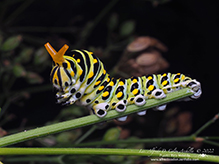 |
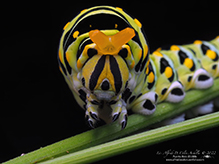 |
|
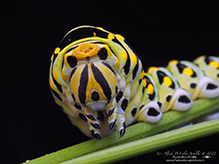 |
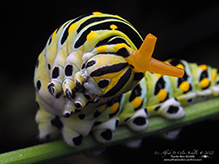 |
|
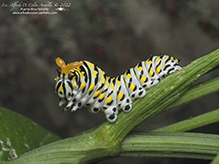 |
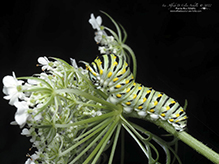 |
|
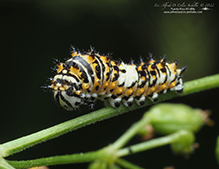 |
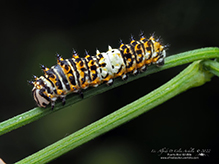 |
|
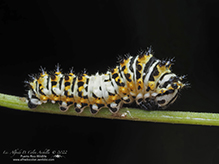 |
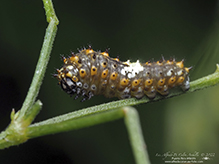 |
|
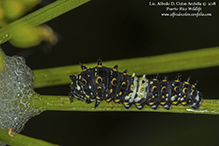 |
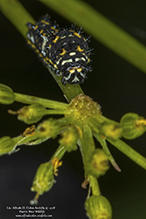 |
|
Mike Poeppe |
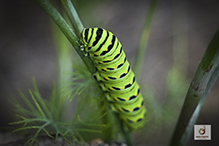 |
Luciearl |
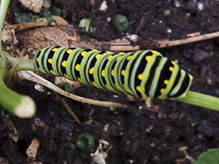 |
They will purposely plant parsley next year. Found several in the pot on the deck. |
Paige Bergeland |
||
Hatching Black Swallowtails in Lac Qui Parle County A few weeks ago, I identified a ton of Tussock Moths eating away at all our ditches milkweed. I am trying to grow a few indoors of those as well. Are there any programs for caterpillar farms? |
||
| Well, being almost 4 weeks later, this morning I discovered my first butterfly having emerged from its chrysalis! Then another one an hour later! Just 15 or so more to go! Im am super excited but wanted to confirm with you that there are Black swallowtails in Lac Qui Parle County. I hope you can see my pics! | 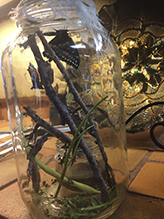 |
|
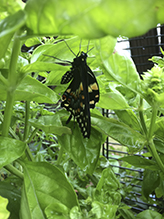 |
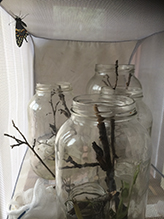 |
|
Diane Madsen |
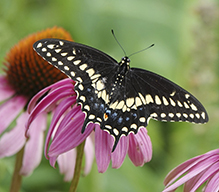 |
Attached is a photo I took yesterday (7-31-21) of what I believe is a Black Swallowtail Butterfly. I saw it in the pollinator garden at Centennial Lakes Park in Edina. I did not realize they were uncommon in Minnesota (although I don't think I've ever seen one before) until I looked it up. |
Dan W. Andree |
||
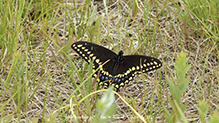 |
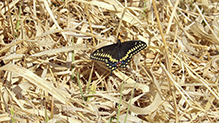 |
|
Black Swallowtail butterfly... On a part of the big hill where they usually mow around the outer perimeter. Just off this mowed swath was the prescribed burn.This path swath wasn’t burned. The path was maybe 10-15 feet something like that wide along the SNA perimeter around the west section. The swallowtail seemed to be resting for a short period then fly and land in the previously burned over area where it hung out most often. |
Earliest Black Swallowtail Butterly... I had seen. May 9, 2021 rural Norman Co. Mn. |
|
Black Swallowtail's on Milkweed... These 2 Swallowtails were at a Scientific and Natural Area in Norman County early Summer 2020. I think it was part of the Twin valley Prairie Preserve. |
||
 |
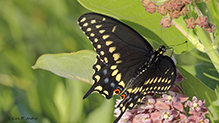 |
|
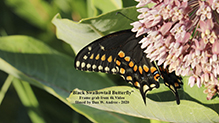 |
||
| Black Swallowtail from 4k video... | ||
Tom Baker |
||
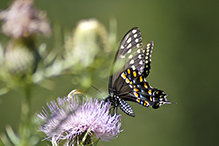 |
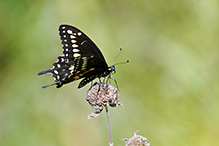 |
|
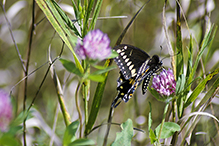 |
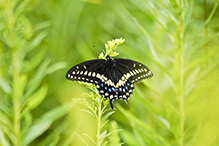 |
|
MinnesotaSeasons.com Photos |
||
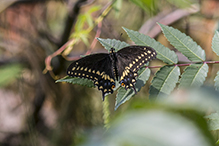 |
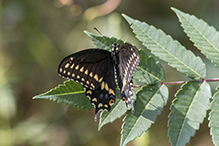 |
|
Adult |
Adult |
|
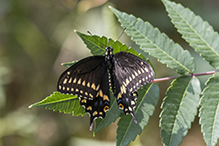 |
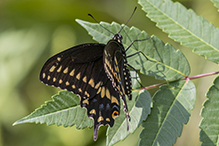 |
|
Adult |
Adult |
|
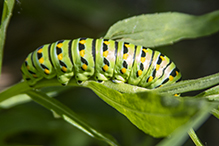 |
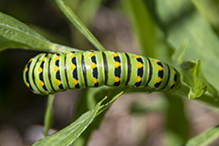 |
|
Fifth instar caterpillar |
Fifth instar caterpillar |
|
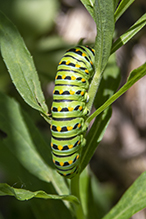 |
||
Fifth instar caterpillar |
|

Slideshows |
Eastern Black Swallowtail |
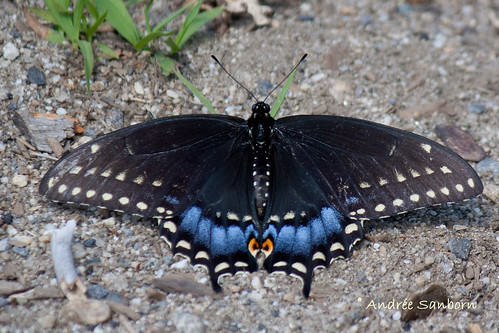
|
About
Papilio polyxenes |
Papilio polyxenes (Black Swallowtail) |
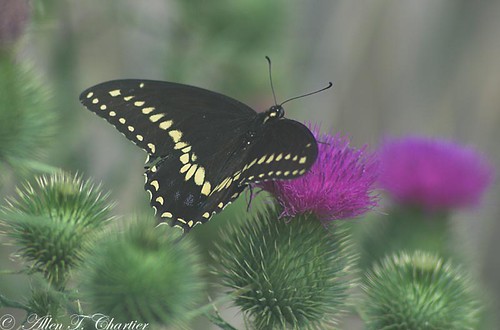
|
Black Swallowtail |
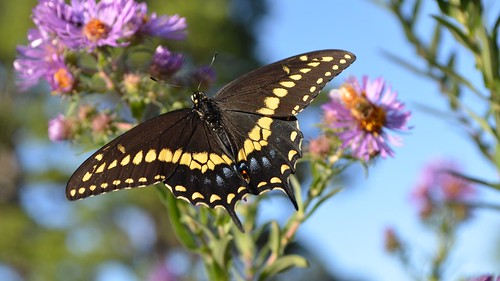
|
Black Swallowtail |
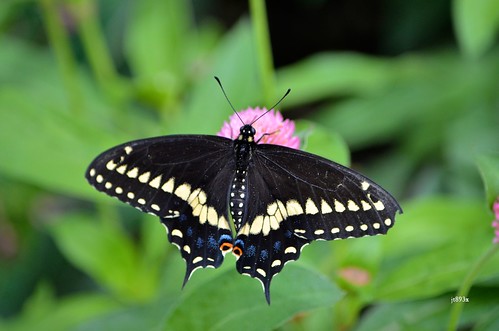
|
BlackSwallowtailLifeCycle |
About
Published on Aug 30, 2013 This shows the different stages of a Black Swallowtail from caterpillar to Butterfly and all points in between. |

visitor videos |
||
Share your video of this insect. |
||
This button not working for you? |
||
|
Other videos |
||
Papilio polyxenes 2nd attempt.mov |
About
Uploaded on Jul 18, 2011 No description available. |
Kansas Black Swallowtail Pupating |
About
Published on Jul 27, 2013 I spotted this fellow on my second year parsley which was going to seed. I've enjoyed seeing these caterpillars since i was a kid. They chow down on dill/parsley. This was the first opportunity i have had to see one turn in to a chrysalis. |

visitor Sightings |
||
Report a sighting of this insect. |
||
This button not working for you? |
||
| Gregory Gilman 7/20/2025 |
Location: Rochester, MN The Parsley Caterpillar! Of the Black Swallowtail |
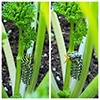 |
Alfredo Colon |
Location: Albany, NY |
 |
| Mike Poeppe 6/10/2023 |
Location: around Houston, MN |
| Alfredo Colon 8/15/2022 |
Location: Albany, NY |
| Alfredo Colon 8/11/2022 |
Location: Albany, NY |
| Alfredo Colon 8/10/2022 |
Location: Albany, NY |
| Alfredo Colon 8/7/2022 |
Location: Albany, NY |
| Alfredo Colon 8/6/2022 |
Location: Albany, NY |
| Luciearl 7/2021 |
Location:Lake Shore They will purposely plant parsley next year. Found several in the pot on the deck. |
| Dan W. Andree 5/9/2021 |
Location: rural Norman Co. Mn. Earliest Black Swallowtail Butterly I had seen. |
 |
| Dan W. Andree June-July 2020 |
Location: Norman Co. |
 |
| Chuck 10/13/2019 |
Location: Minneapolis A large, healthy-looking caterpillar is hanging out on our parsley on this 36-degree day. |
|
| Jason 9/23/2019 |
Location: Crystal, MN Just found a mature swallowtail caterpillar happily munching away on my parsley. |
|
| Alfredo Colon Summer 2018 |
Location: Woodbury, Minnesota |
 |
| Beth Siverhus 6/23/2019 |
Location: Warroad, MN I had a black swallowtail in my yard in Warroad, MN for a short time 6/23/19. It was visiting the snow on the mountain flowers. I had never seen one before so it was quite a thrill. (I took photos for documentation and ID confirmation) |
|
| Sande 8/1/2018 |
Location: Anoka, Minnesota loving the cone flowers!! |
|
whereswallace |
Location: Park Rapids, MN |
|
MinnesotaSeasons.com Sightings |
||

Created 10/10/2012 Last Updated: © MinnesotaSeasons.com. All rights reserved. |
